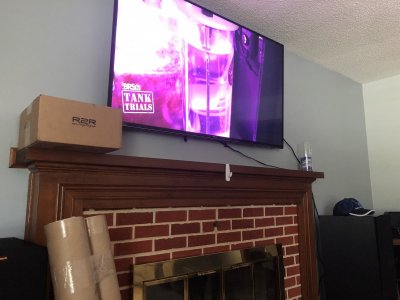In the nature it is common that "new" water comes to a coral with a speed of something between a meter per second or a meter per minute. In that way there is a very stable phosphate and nitrate value. Of course in many places the water can stand still for a while when the tide is changing. But that is just 2 - 4 times a day.
In a tank it is extremly uncommon that we chang so much water as a meter of the tanks length in new water per week. That means that if we are keeping very low values in a reef tank they are instable. I have friends that have measured several ppb phosphorous change between "light on" and "light off" in their reef tanks. Low nitrate values are not easily compared because nitrite interferes so much with the hobby test kits.
I would definitly recommend everyone who has less than 10 ppb phosphorous (0,03 ppm phosphate ) to dose. And dont do it manually once a week. Do it everyday with a dosing pump. It is a stable value we want.
I have a 64 gallon tank that has had big problems with cyano since it started 2 years ago. It has to few fishes in but corals enough to keep nitrate at zero and most of the time phosphate too.
I have been testing higher nitrate, higher phosphate and both higher with no success. Going over to a new 2 component calcium/ kH supplement has raised pH to 8,0 - 8,4 each day and now I have a pound of zeolite in the sump that appears to be somewhat positive. The thought is that the Zeolite - Clinophilite binds ammonia so the algae and bacteria only have nitrate as a nitrogen source.
I have not tried poisons against the cyano as i want to try out a method to get rid of the cyano. With a poison you dont change the reason for the cyano outbreak and it will come back. And with as much cyano as i have in the tank the dying cyano would poison the whole tank. Even if the preparate in itself is ok the dying cyano will release other substances.
In a tank it is extremly uncommon that we chang so much water as a meter of the tanks length in new water per week. That means that if we are keeping very low values in a reef tank they are instable. I have friends that have measured several ppb phosphorous change between "light on" and "light off" in their reef tanks. Low nitrate values are not easily compared because nitrite interferes so much with the hobby test kits.
I would definitly recommend everyone who has less than 10 ppb phosphorous (0,03 ppm phosphate ) to dose. And dont do it manually once a week. Do it everyday with a dosing pump. It is a stable value we want.
I have a 64 gallon tank that has had big problems with cyano since it started 2 years ago. It has to few fishes in but corals enough to keep nitrate at zero and most of the time phosphate too.
I have been testing higher nitrate, higher phosphate and both higher with no success. Going over to a new 2 component calcium/ kH supplement has raised pH to 8,0 - 8,4 each day and now I have a pound of zeolite in the sump that appears to be somewhat positive. The thought is that the Zeolite - Clinophilite binds ammonia so the algae and bacteria only have nitrate as a nitrogen source.
I have not tried poisons against the cyano as i want to try out a method to get rid of the cyano. With a poison you dont change the reason for the cyano outbreak and it will come back. And with as much cyano as i have in the tank the dying cyano would poison the whole tank. Even if the preparate in itself is ok the dying cyano will release other substances.


















